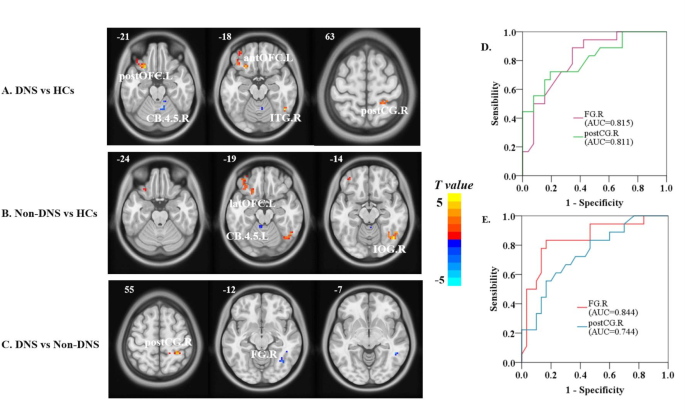Gender-based factors associated with hepatitis C testing in people who inject drugs: results from the French COSINUS cohort
Gender-based factors associated with hepatitis C testing in people who inject drugs: results from the French COSINUS cohort
We identified factors associated with hepatitis C virus (HCV) testing in the previous 6 months in people who inject drugs (PWID) according to gender.
COSINUS (Cohorte pour l’évaluation des facteurs Structurels et Individuels de l’USage de drogues) is a multisite longitudinal cohort study conducted between June 2016 and May 2019.
Harm reduction facilities in two French cities (Marseille and Bordeaux).
Eligibility criteria were as follows: 18 years of age or older, French speaking, regular use of illegal drugs or of prescribed medication, having injected at least once in the previous month and being able to provide informed consent to participate. We selected data for 298 participants (624 observations).
Self-reporting HCV testing in the previous 6 months. Gender was defined as self-identifying as a woman, man or transgender person.
Seventy-nine per cent (n=235) of the sample were men, and 63% (n=189) reported HCV testing in the previous 6 months. Our results suggest that men recently incarcerated (OR (95% CI): 3.26 (1.31, 8.12), p=0.011), those regularly attending harm reduction facilities (OR (95% CI): 2.49 (1.47, 4.22), p=0.001), and those with lifetime attempted suicide (OR (95% CI): 2.07 (1.08, 3.95), p=0.028) were more likely to have been tested for HCV in the previous 6 months, whereas older men were less likely (OR (95% CI): 0.46 (0.24, 0.89), p=0.022). Women who had slept in the street (OR (95% CI): 3.95 (1.12, 13.89), p=0.032) were more likely to have been tested for HCV in the previous 6 months, whereas those employed (OR (95% CI): 0.31 (0.12, 0.83), p=0.019) and those with lifetime attempted suicide (OR (95% CI): 0.39 (0.16, 0.97), p=0.044) were less likely.
Our results highlight the importance of improving current harm reduction facilities for PWID by adapting them to women’s needs and paying special attention to women’s mental health. Furthermore, in the context of primary care, improving provider training and reducing injection-related stigma may improve HCV testing uptake in older men and employed women.
No data are available. COSINUS data are not publicly available for ethical reasons.
http://creativecommons.org/licenses/by-nc/4.0/
This is an open access article distributed in accordance with the Creative Commons Attribution Non Commercial (CC BY-NC 4.0) license, which permits others to distribute, remix, adapt, build upon this work non-commercially, and license their derivative works on different terms, provided the original work is properly cited, appropriate credit is given, any changes made indicated, and the use is non-commercial. See: http://creativecommons.org/licenses/by-nc/4.0/.
If you wish to reuse any or all of this article please use the link below which will take you to the Copyright Clearance Center’s RightsLink service. You will be able to get a quick price and instant permission to reuse the content in many different ways.
Highly effective and tolerable direct-acting antiviral agents (DAA) against hepatitis C virus (HCV) first became available in France in 2014. In 2016, DAA availability was extended to people who use drugs, which contributed to an increase in HCV testing activity and a short-lived increase in DAA treatment initiation in this population.1 2 Indeed, although France currently seems to be on target to reach its goal of HCV elimination by 2025,3 national data1 indicate that treatment initiation has decreased since 2017. This trend may reflect difficulties in reaching people who do not frequent healthcare services, including people who inject drugs (PWID).
Ending the HCV epidemic in PWID is a priority issue in France.4 HCV prevalence in this population is high (64%),5 as is viraemic infection (48%).6 Tackling the epidemic means implementing interventions at different levels of the care cascade, including HCV testing. Testing is crucial to limit virus transmission through serostatus awareness and to identify persons requiring treatment.4 Recent data show that only half the people who use drugs attending harm reduction facilities in France were regularly tested for HCV.7
Access to HCV testing and care for PWID is hampered by individual and structural barriers. The former include limited knowledge about HCV infection, testing and treatment,8–10 as well as poor social conditions (unstable housing, lack of health insurance),10 11 which can lead to patient deprioritisation of HCV prevention and care.9 Structural barriers include previous experience of drug injection-related stigma and discrimination from healthcare providers,8 12–14 a lack of healthcare providers’ involvement in HCV management15 and the criminalisation of drug use in France.16 Despite having a greater risk of HCV acquisition than men,17 women who inject drugs have less access to HCV treatment.18 They also face additional barriers to harm reduction and addiction care services,19 20 as available services are not tailored to their specific needs.21 22 Specifically, they experience intersectional stigma related to gender, to injecting drug use practices23 and to hepatitis C infection. This stigma comes from the general population, healthcare providers and even from other members of drug use networks.12 19 24 Using data from the COSINUS (Cohorte pour l’évaluation des facteurs Structurels et Individuels de l’USage de drogues) cohort, we aimed to identify factors associated with HCV testing in PWID living in France considering gender-related specificities.
COSINUS is a multisite longitudinal cohort study conducted between June 2016 and May 2019 in four French cities (Paris, Strasbourg, Marseille and Bordeaux), two of which (Paris and Strasbourg) have a drug consumption room (DCR) open since 2016. The main objective was to assess the relative effectiveness of DCR on HIV, HCV risk practices and other health issues.25 26
Participants were recruited in DCR (Paris and Strasbourg) and harm reduction facilities (all four cities). The latter, called CAARUD (Centres d'accueil et d'accompagnement à la réduction des risques pour usagers de drogues) in France, are low-threshold facilities which PWID can frequent without having to participate in an official care programme. All participating recruitment structures had large active file populations, which ensured a degree of representativeness of the whole PWID population in each city. Once enrolled, participants were followed for 12 months. Four face-to-face questionnaires were administered by trained interviewers at enrolment (M0), 3 months (M3), 6 months (M6) and 12 months (M12). Participants were compensated for their participation at each interview with a 10-euro service voucher. COSINUS was approved by the Institutional Review Board (IRB00003888) of the French Institute of Medical Research and Health (INSERM) (opinion number: 14-166). The study protocol is described in detail elsewhere.27
Eligibility criteria for COSINUS were as follows: 18 years of age or older, French speaking, regular use of illegal drugs (heroin, cocaine/crack, amphetamines, ecstasy, etc) except cannabis or of prescribed medication (methylphenidate, buprenorphine, benzodiazepines, morphine sulphate, oxycodone, etc), having injected at least once in the previous month and being able to provide informed consent to participate.
Patients or the public were not involved in the design, conduct, reporting or dissemination plans of our research.
The cohort study questionnaires collected self-reported data on sociodemographic characteristics, drug use practices (history of drug use and current drug and alcohol use), drug use-related HIV–HCV risks, overdoses and suicide risk, treatment for addiction, DCR attendance, health conditions and access to care and prevention, history of incarceration, negative life events, psycho-social and cognitive assessments, sexual health and discrimination.
The main outcome—‘HCV testing in the previous 6 months’—was created as a dichotomous variable and was defined as self-reporting being tested for HCV antibodies in the previous 6 months. This variable was created in accordance with current French recommendations on HCV testing frequency for at-risk populations.4 Participants who declared being tested more than 6 months previously or never tested were categorised in the ‘no HCV testing in the previous 6 months’ group. Participants who answered ‘do not know’ were also categorised in this group.
Explanatory variables were as follows: sociodemographic data (age, gender, country of birth, employment and sleeping in the street in the previous month), behavioural and health data (health insurance, recent incarceration, lifetime suicide attempt(s), use of harm reduction facilities and taking opioid agonist therapy (OAT)) and drug use practices (time since first injection, daily heroin use, daily non-prescribed buprenorphine use, daily non-prescribed methadone use, daily non-prescribed morphine use, daily cocaine use, daily crack/free base use, daily cannabis use, harmful alcohol consumption, daily injection and injection equipment sharing). Participants self-identified their gender as a man, woman or transgender person.
For the present study, of the 665 participants enrolled in COSINUS, we only selected data for the 298 PWID (ie, 624 observations) in Marseille and Bordeaux, as in these cities, participants were enrolled in the majority of the harm reduction facilities, while in Strasbourg and Paris, participants were mainly enrolled in DCR (figure 1). For the present analyses, we wished to focus specifically on access to classic services and not DCR. Furthermore, we only selected data for the inclusion (M0), 6 month (M6) and 12 month (M12) visits because the 3 month visit did not include questions about HCV testing. A two-step procedure was used to select only PWID eligible for HCV testing (ie, HCV-negative or unaware of their status). In the first step, we excluded participants (ie, all visits) whose responses in different visits were incoherent. Responses were deemed incoherent if:
The second step involved retaining or removing visits with a view to only retaining those persons eligible for HCV testing (ie, who were not already diagnosed HCV positive) as follows:
We described and compared participants tested for HCV in the previous 6 months with those who were not using a χ2 test for categorical data. To identify factors associated with HCV testing, we first performed univariable logistic regressions stratified by gender to identify eligible variables for the multivariable models at a threshold p-value<0.20. We then performed multivariable mixed logistic regressions stratified by gender using a backward stepwise procedure. Only variables with a p-value<0.05 were retained in both final models. All statistical analyses were performed with Stata SE V.16.1 software (StataCorp. 2019. Stata Statistical Software: Release V.16. College Station, TX: StataCorp LLC.).
Table 1 presents the baseline characteristics of our study sample. Among the 298 PWID selected, 63% reported HCV testing (ie, in the previous 6 months), while 37% did not. Seventy-eight per cent (78.9%) were men. Nearly 30% of participants were over 45 years old. Seventy-eight (78.2%) per cent were unemployed and 50% had slept in the street in the previous month. Nine per cent reported recent incarceration in the previous 6 months. Seventy (69.4) per cent were taking OAT and 38% reported a suicide attempt during their lifetime. Sixty-eight per cent had regularly attended harm reduction facilities in the previous 6 months. With regard to drug use practices, 65.3% had injected drugs for more than 10 years and 55.7% injected drugs daily. With regard to daily drug use (injection or other route), 15.1% were using cocaine, 12.8% non-prescribed morphine, 3% non-prescribed methadone, 1.3% heroin and 1.1% non-prescribed buprenorphine. Seventeen (17.4%) per cent reported sharing injection equipment. PWID tested for HCV in the previous 6 months were more likely to have slept in the street in the previous month and to have regularly attended harm reduction facilities in the previous 6 months.
Table 1
Baseline characteristics of study sample (np=298)
Table 2 presents the baseline characteristics of our study sample at inclusion according to gender. Among the 298 PWID selected, 78.9% were men and 21.1% women. Of these, 61.7% and 69.8% were tested for HCV in the previous 6 months, respectively. Men were more likely than women to be over 45 years old, to have slept in the street in the previous month, to have regularly attended harm reduction facilities in the previous 6 months, to have been recently incarcerated, to have injected drugs for over 10 years and to use daily non-prescribed buprenorphine and cannabis. Women were more likely than men to have attempted suicide during their lifetime.
Table 2
Baseline characteristics of study sample according to gender (np=298)
With regard to the facilitators associated with HCV testing (table 3), men recently incarcerated (OR (95% CI): 3.26 (1.31, 8.12), p=0.011), those regularly attending harm reduction facilities (OR (95% CI): 2.49 (1.47, 4.22), p=0.001) and those with a lifetime suicide attempt (OR (95% CI): 2.07 (1.08, 3.95), p=0.028) were all more likely to have been tested in the previous 6 months. Similarly, women who had slept in the street in the previous month (OR (95% CI): 3.95 (1.12, 13.89), p=0.032) were more likely to have been tested.
Table 3
Factors associated with HCV testing in the previous 6 months in men (nobs=488) and in women (nobs=136); univariable and multivariable mixed logistic regressions stratified by gender
With respect to the barriers associated with testing (table 3), men over 45 years old were less likely to have been tested for HCV in the previous 6 months (OR (95% CI): 0.46 (0.24, 0.89), p=0.022). With regard to women, those employed (OR (95% CI): 0.31 (0.12, 0.83), p=0.019) and those with a lifetime suicide attempt (OR (95% CI): 0.39 (0.16, 0.97), p=0.044) were less likely to have been tested in the previous 6 months.
In our sample of PWID at risk of HCV infection (ie, never infected, cured or unaware of their status), our results highlight differences between genders in the types of factors associated with HCV testing in the previous 6 months. Individual factors were associated with HCV testing for men and women, while structural factors were only associated with men.
A history of incarceration was positively associated with HCV testing in men, which is encouraging, as it reflects the important role health services play in prisons. It also echoes findings in Ireland and Australia.28–31 However, we found no such association for women. The international literature highlights less availability of harm reduction services (eg, OAT, sterile equipment and HCV programmes) in women’s prisons compared with men’s prisons despite the fact that women in prisons also use drugs.22 32 Other studies found high HCV prevalence among incarcerated women in different contexts,33 34 particularly among those who injected drugs, highlighting the need for HCV services for women in this setting. In the specific context of France, few data are available on the epidemiology and healthcare of inmates, and the management of HCV care in prisons varies widely across regions. Prisons represent a key setting for HCV elimination in France.35 However, the most recent study on prisons there36 highlighted poor testing coverage and the need to reinforce screening at admission and during detention, in order to improve identification of people who need treatment. Moreover, the authors recommended decreasing the interval between each step of the care cascade in order to prevent loss-to-follow-up of persons diagnosed HCV positive and released before initiating DAA. These various elements suggest the need to develop harm reduction services in prisons not only to prevent new HCV infections, but also to develop onsite rapid testing programmes so that treatment can be initiated as soon as possible. Such programmes should consider gender specificities.
Regularly attending harm reduction facilities was also identified as a facilitator for HCV testing for men in the present study. Our results confirm international data which support the call for more HCV testing in harm reduction facilities (needle exchange programmes, DCR and community-based organisations) and drug treatment services, improving HCV testing uptake.16 37 38 Current French recommendations encourage harm reduction facilities to propose regular HCV testing to PWID to reduce transmission.4 However, a French study focusing on professionals prescribing and referring their HCV-diagnosed PWID patients to hepatology specialists suggested that men were more frequently tested in harm reduction facilities and prisons than women.39 Even though women are less likely to inject drugs,40 they are still under-represented in French harm reduction services and represent barely a quarter of the people using them.7 41 One hypothesis for this is that they face more specific stigmatising situations in harm reduction settings than their male counterparts and experience a ‘double stigma’ at the intersection between gender and drug use identities,23 which limits their access to healthcare and harm reduction facilities.22 42 43 For instance, they may feel stigma related to parenting or motherhood which can lead them to delay or forego care.19 42 They may also fear the consequences on custody or visitation rights of their children.20 44 The specific needs of women who inject drugs are rarely met by these services, as most do not offer sexual health, reproductive health or childcare support.19 44 Developing tailored and gender-based support (eg, gynaecology, pregnancy, contraception, housing and insurance) could attract more of them to these services45 and decrease the intersectional stigma they experience in these settings.21 46 In turn, this would put them in closer contact with the health system in general. Some harm reduction facilities in France have already implemented tailored services and have specific opening hours reserved for women only.47 This could be rolled out to the whole territory.
An unexpected individual factor associated with HCV testing in our study was lifetime suicide attempt, which was a facilitator and a barrier for men and women, respectively. We used this variable as a proxy for mental health. A recent meta-analysis of studies on mental health conditions among PWID found a high prevalence of depression and suicide attempts.48 Moreover, studies conducted in different contexts found that women who inject drugs seemed more concerned by mental health conditions (depression, anxiety and post-traumatic stress disorder) than men.49 50 Other studies found that some mental health conditions (ie, depression and bipolar disorder) were associated with injection risk practices such as sharing materials (ie, needle, syringes and cotton) among men and women,51 52 resulting in a greater risk of contracting HCV. Elsewhere, another study found that mental health conditions (ie, depression, anxiety and suicide attempts) were associated with difficulties accessing a variety of health and social services, including drug treatment facilities and needle exchange services,53 despite the fact that the latter offer tailored HCV testing for PWID.
With regard to our finding that mental health (using the proxy of lifetime suicide attempt) was a facilitator for HCV testing in men, to the best of our knowledge, only one other study to date reported that severe psychological distress was positively associated with HCV antibody testing.29 One explanation for our result is that women may encounter multiple stigma in healthcare settings related to drug injection, gender22 23 42 (see above) and mental health issues.54 These intersectional stigmatisations negatively impact women’s experience with healthcare more than men’s, leading them to conceal their injection practices from healthcare providers and delay seeking care.55 56 Accordingly, they have fewer opportunities to get tested. Our findings highlight the importance of paying special attention to women with mental health conditions who use harm reduction facilities in order to globally improve HCV testing coverage.
We identified two individual factors related to HCV testing which were specific to women: employment and having slept in the street in the previous month. The former was a barrier, the latter a facilitator. Both factors reflect contrasting socioeconomic situations: women with a more stable socioeconomic situation had less access to HCV testing, whereas women living in precarity had more access. Our result regarding employment is consistent with results from a previous French study by our team (PrebupIV study) conducted among people who injected opioids.57 Elsewhere, a study conducted on PWID frequenting OAT clinics in Greece found that employment was associated with past but not recent HCV testing.58 Moreover, a French sociological study conducted among socially included women (ie, in employment) found that they had never attended harm reduction or addictology services because they considered that these services were not adapted to their needs.59 This may be an explanation for our result in our French sample. Another possible explanation is that employed women fear the negative consequences linked to the disclosure of their drug use in their workplace.42 These various findings suggest that employed PWID in our study, and particularly women, had fewer opportunities to access HCV testing in harm reduction facilities. It is possible that employed women attend primary care facilities more frequently, while people living in precarity are more likely to frequent harm reduction facilities.7
French general practitioners have a major role in prescribing HCV testing. However, training in HCV management, including the identification of risk factors for prescribing HCV testing (eg, injecting drug use) during medical consultations needs to be improved for these professionals.39 Combined with interventions to reduce injection-related stigma by healthcare providers, this training could improve the identification of PWID and could multiply opportunities for women who inject drugs to be tested, especially since general practitioners in France can initiate HCV treatment.60
The higher likelihood of HCV testing in women with unstable housing in our study (ie, sleeping in the street in the previous month) contrasts with other studies where unstable housing in PWID was associated with less HCV testing, treatment and access to care.9 16 61 62 Indeed, the literature highlights that intersectional stigma which women face from homelessness and other difficulties places them in a vulnerable position in terms of access to health services; these services either do not offer enough help to them or reinforce stigma against them.63 One possible explanation for this contrasting result is that women in our study were probably in contact with outreach services that have facilitated access to HCV testing, thanks to their participation in official French harm reduction programmes. This facilitated access fosters HCV testing uptake among people experiencing homelessness.64 65 Moreover, women who use drugs are more likely to attend harm reduction mobile units rather than fixed sites.66 Elsewhere, a Canadian study found that stable housing was a barrier to testing.64 In that study, the authors explained that their outreach intervention mostly targeted PWID living in social precarity. Our finding does not hide the importance of guaranteeing decent housing conditions to all women and men in the context of improving global health and access to care.
Men over 45 years old in our study were less likely to be HCV tested than younger men, suggesting the importance of paying special attention to this age group when proposing HCV testing. This finding does not reflect the literature in general where older PWID are more frequently tested29 31 and treated62 for HCV. However, it is consistent with previous results from this team’s PrebupIV study,57 which found that older PWID had less access to HCV testing in harm reduction facilities. One possible explanation for our finding is that older men may have been more likely to attend primary care structures than harm reduction facilities because of a more stable socioeconomic situation.
This study has limitations. First, self-reported data may have led to social desirability bias. However, a previous study demonstrated good agreement between self-reported and clinically tested HCV status among a sample of Australian PWID.67 Second, women accounted for only one-fifth (21%) of our sample. This lack of study power may have influenced our finding that no structural factor was associated with HCV screening among women. Third, our study was limited to only two cities (Marseille and Bordeaux), and therefore our results cannot be extended to the whole country. Having said that, there was good representativeness of available harm reduction services in these two cities. Fourth, as we did not use any specific statistical method to study intersectionality, the accuracy of our results in this regard is limited. Finally, while quantitative measures are useful to characterise inter-gender differences, they do not provide an in-depth real-world understanding of the nature and impact of barriers and facilitators to HCV testing. Further qualitative studies are needed to better understand structural factors and trajectories of people to complement and clarify these results.
To conclude, the factors associated with HCV testing differed for women and for men who inject drugs in our study. Adapting current harm reduction facility strategies and services to better accommodate women’s needs, guaranteeing their access to services including HCV testing and paying special attention to women with mental health conditions may constitute three important avenues for action. Moreover, improving primary care providers’ training and reducing injection-related stigma in primary care may improve HCV testing uptake by older men and employed women, who may frequent harm reduction facilities less often.
No data are available. COSINUS data are not publicly available for ethical reasons.
Not applicable.
This study involves human participants and was approved by Institutional Review Board (IRB00003888) of the French Institute of Medical Research and Health (INSERM) (opinion number: 14-166). Participants gave informed consent to participate in the study before taking part.
We would like to thank all the research participants and the members of the COSINUS scientific committee (Henri-Jean Aubin, Patrizia Carrieri, Nerkassen Chau, Jean-Marie Danion, Maurice Dematteis, Laurent Karila and Thomas Kerr), the Ethical Review Committee, the ITMO-Public Health at Inserm (Rémy Slama and Charles Persoz), the French Institute for Public Health Research (IRESP) (Rémy Slama and Marion Cipriano) and the IRESP scientific committee (Marc Bardou, Christian Ben Lakhdar, Eric Breton, Olivier Cottencin, Helene Donnadieu-Rigole, Xavier Laqueille, Jennifer O’Loughlin, Christophe Tzourio and Frank Zobel). We also thank the ANRS | Maladies infectieuses émergentes for funding the fourth year of Ilhame Anwar’s PhD. Finally, our thanks to Jude Sweeney (Milan, Italy) for the English revision and copyediting of our manuscript.










